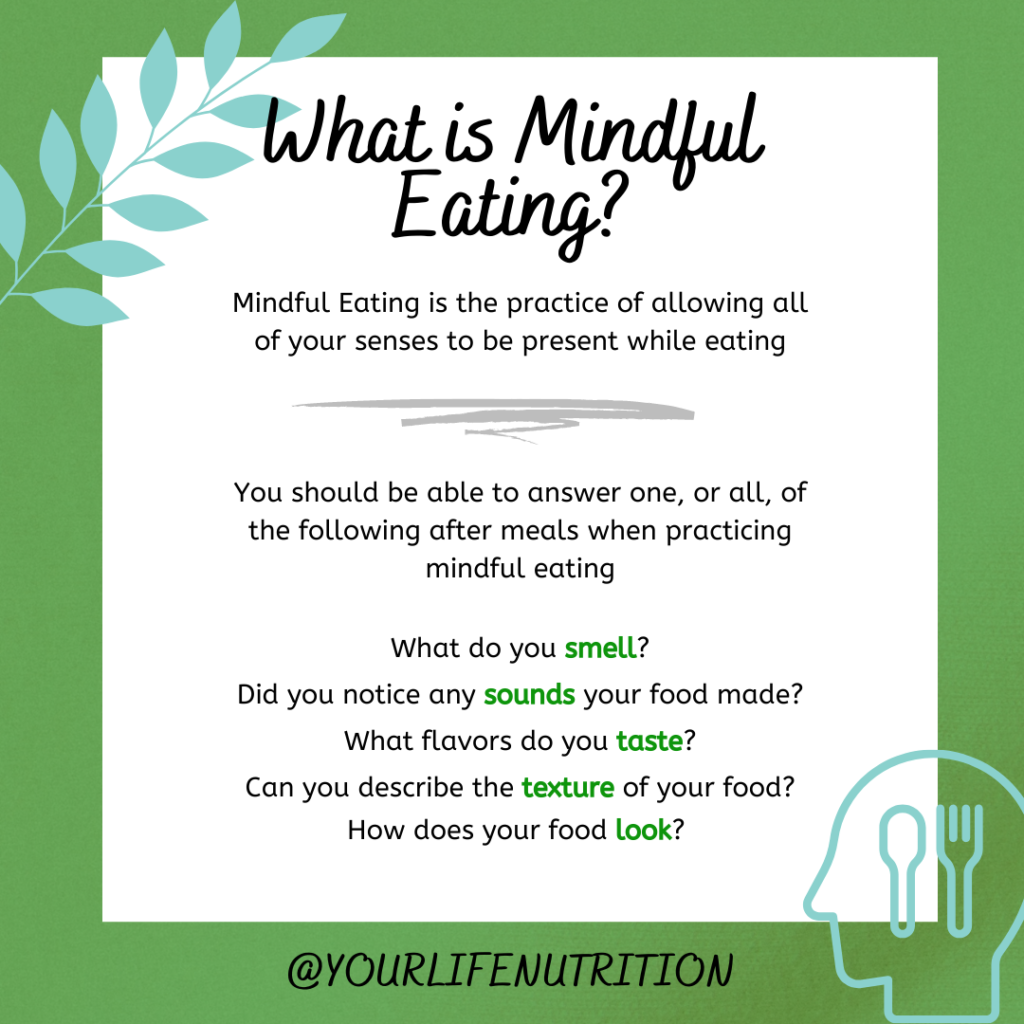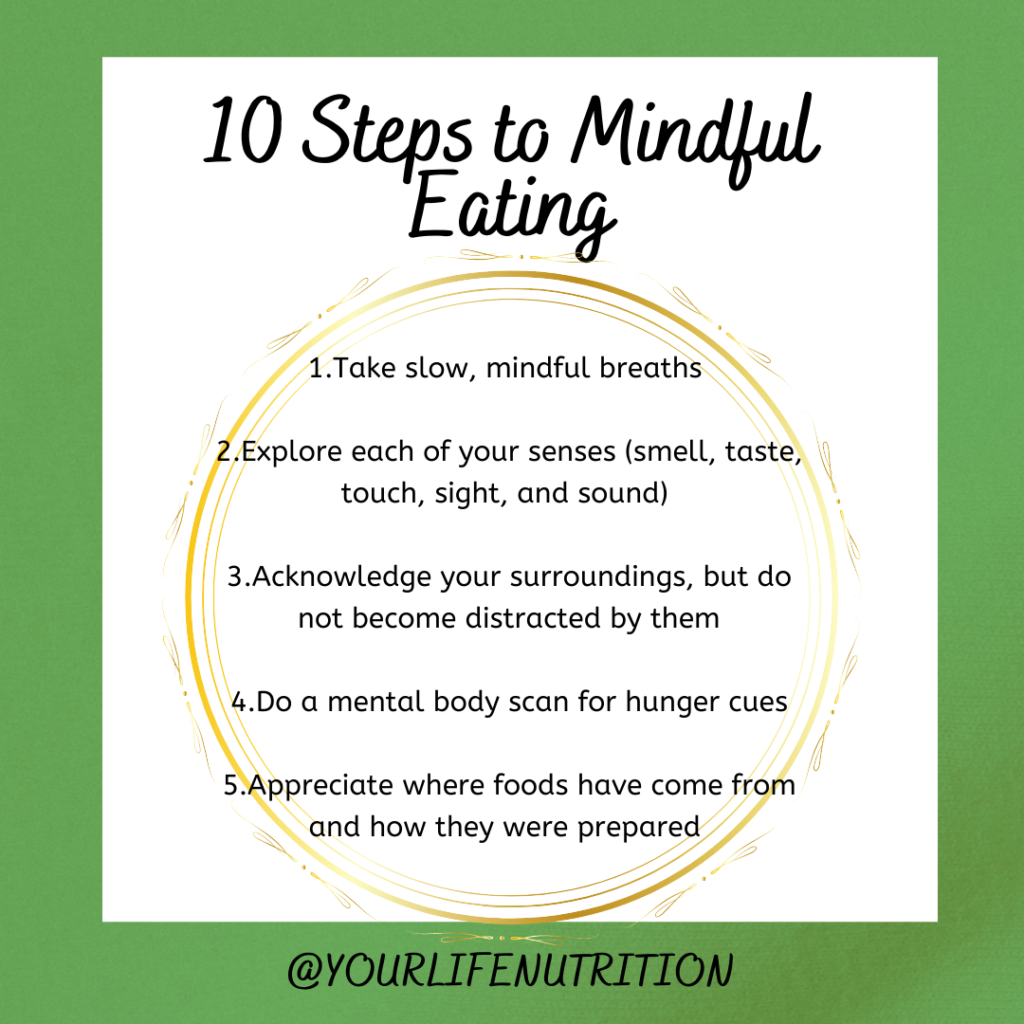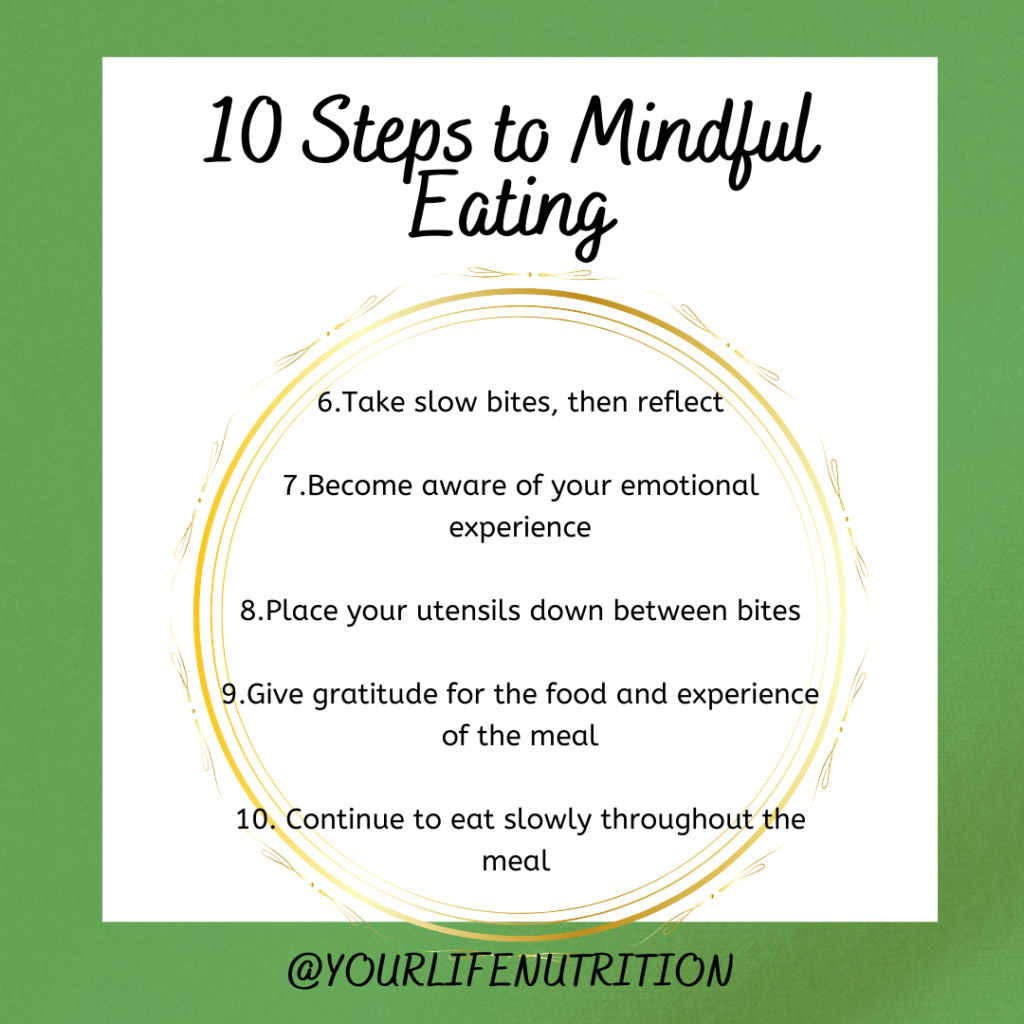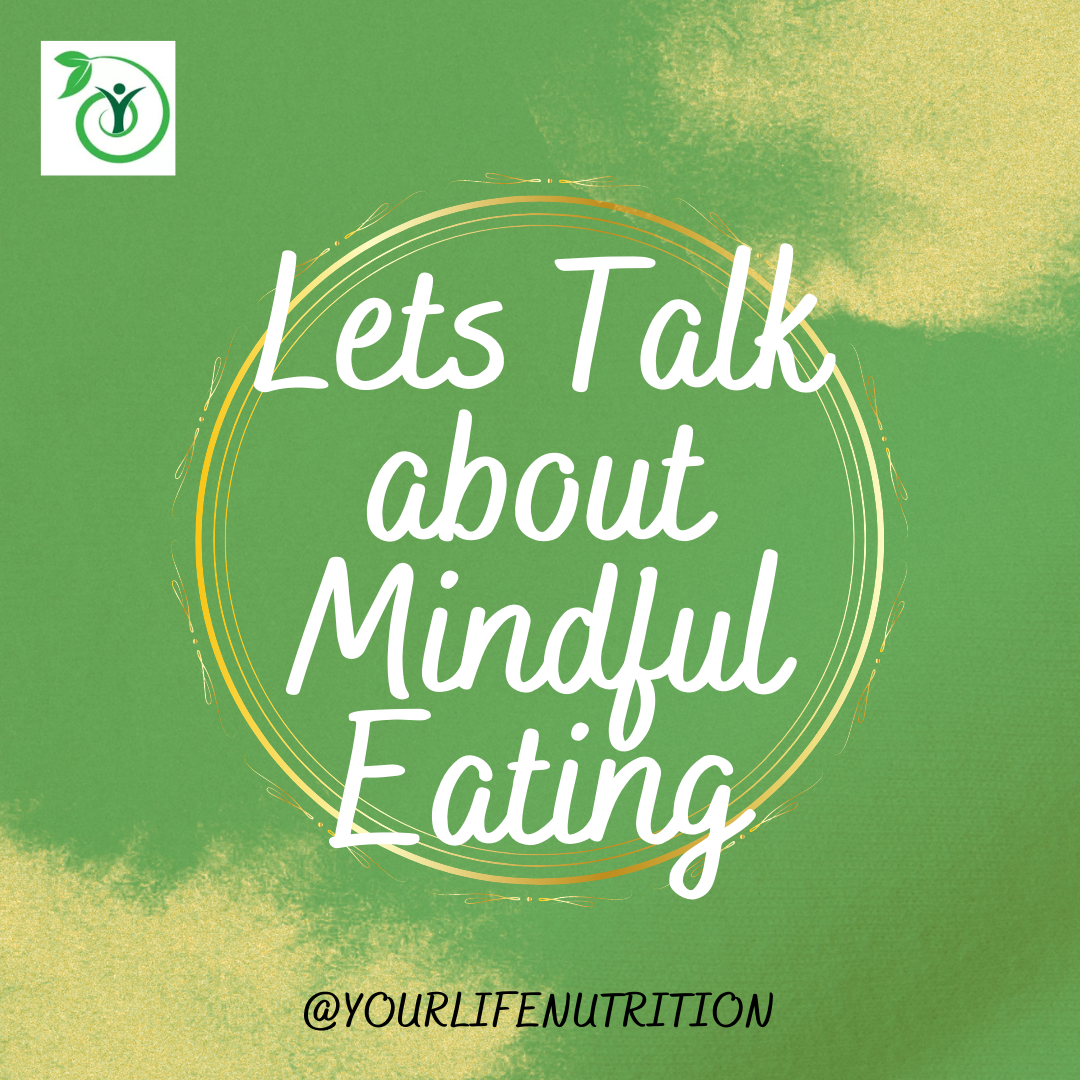Picture the last meal or snack you ate. Do you remember what it was? Was the texture crunchy or soft while chewing? Were the flavors spicy, savory, sweet, or a mixture? Did you notice any emotions experienced while eating? How did you feel while preparing your meal or snack? Can you recall any smells while you were cooking or eating? If not, take a moment to reflect on why you cannot answer some, or all, of these questions.
Often, meals and snacks are eaten while multitasking or when distractions are present, such as watching TV or working while eating. Other distractions while eating may include reading, studying, scrolling through electronic devices, or rushing through meals. Often, humans rush while eating as well by having their next bite of food ready to eat on their utensils while they are still chewing their previous bite of food. This type of eating is known as mindless eating (1). While mindless eating is taking place, you may find yourself ignoring your body’s hunger signals because your attention is unable to focus on only eating, and eating may become rushed (1). When signs of hunger are ignored, you are more likely to overeat throughout the day (2). In time, eating more than your body needs may result in weight gain, even progressing to obesity or other co-morbidities, such as metabolic syndrome and cardiovascular disease (2).
Mindless eating also includes eating to fill an emotional need (1). Think of your favorite cheesy Rom-Com movie, where the main female character suffers a breakup, and she is eating ice cream while crying. Or, when no activities are holding your attention, so you repeatedly stare at the food in the pantry and refrigerator until something catches your eye. Eating to ease sadness or eliminate boredom are examples of mindless eating (1). Other emotions that trigger mindless eating include anxiousness, stress, loneliness, or when reminiscing on the past (1). If different outlets of emotions are not developed, mindless eating may become a habitual pattern when these emotions are experienced and may contribute to an unhealthy relationship with foods and drinks.

To combat mindless eating, it is recommended to practice mindful eating (1). Mindful eating is allowing each of your senses to be aware of the foods and drinks you consume (1). This means noticing the aroma, taste, or texture of food, while acknowledging the feelings each type of food offers you (1). Mindful eating also encourages pacing each meal, by enjoying each bite without rushing (1). This can be done be setting your utensils down between bites of food and reflecting, or by drinking sips of water between bites of food to promote fullness. By allowing your body the opportunity to experience food and drinks mindfully, you will be able to feel when your hunger has been satisfied, decreasing your risk of overeating. This experience will also help you develop a healthier relationship with food, since it becomes more than fuel for your body. Mindful eating allows you to gain a new understanding of each item you consume, while also developing an understanding of how each food makes you feel.
Mindful eating is a ten-step process (1):
- Take slow, mindful breaths
- Explore each of your senses (smell, taste, touch, sight, and sound)
- Acknowledge your surroundings, but do not become distracted by them
- Do a mental body scan for hunger cues
- Appreciate where foods have come from and how they were prepared
- Take slow bites, then reflect on the quality of each item
- Become aware of your emotional experience
- Place your utensils down between bites to allow focused attention on the current bite of food
- Give gratitude for the food and experience of the meal
- Continue to eat slowly throughout the meal


Mindful eating can be practiced at various stages of your meal patterns, not only when food is plated in front of you. Mindful eating can begin while writing a grocery shopping list on a piece of paper, by reflecting on why you would like each food item and thinking about where it came from in order for it to be purchased (1). As mentioned earlier, you can exhibit mindful eating while cooking or preparing your meals and snacks as well. The art of purchasing, preparing, cooking, and eating foods is an ever-changing experience, as each time will be slightly different, and familiar foods may be prepared differently or eaten with different foods.

Try to ease into mindful eating patterns to develop long-term habits and progress away from mindless eating. Consider incorporating a few steps into your daily routine at some meals, then slowly increase to all meals (1). This can be done by taking mindful breaths at breakfast while enjoying your morning coffee and meal, or by exploring each of your senses while cooking dinner. You can even try to ease into mindful eating by allotting yourself a certain amount of time to be mindful during meals, such as spending the first five minutes of dinner in silence to reflect on the meal you’re about to eat (1). Also, consider slowing down your meals by setting your utensils down between bites, or drinking water between bites, as mentioned earlier. Mindful eating is a practice that may come with challenges. It is important to be aware of these challenges, but to see them as new opportunities to expand mindful eating practices.
References
- Segal J, Robinson L, Cruz M. Mindful Eating. HelpGuide Website. https://www.helpguide.org/articles/diets/mindful-eating.htm. Published October 2020. Accessed February 9, 2022.
- Harris C. Mindful Eating – Studies Show This Concept Can Help Clients Lose Weight and Better Manage Chronic Disease. TodaysDietitian Website. https://www.todaysdietitian.com/newarchives/030413p42.shtml. Published March 2013. Accessed February 9, 2022.
Post Written and Created by: Your Life Nutrition Intern, Megan McCormick – Dietetic Intern at the Louis Stokes Veteran Affairs Medical Center and Graduate Student of Case Western Reserve University, Cleveland, OH





